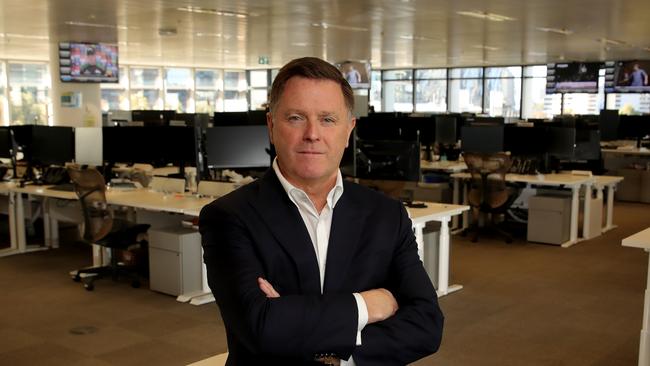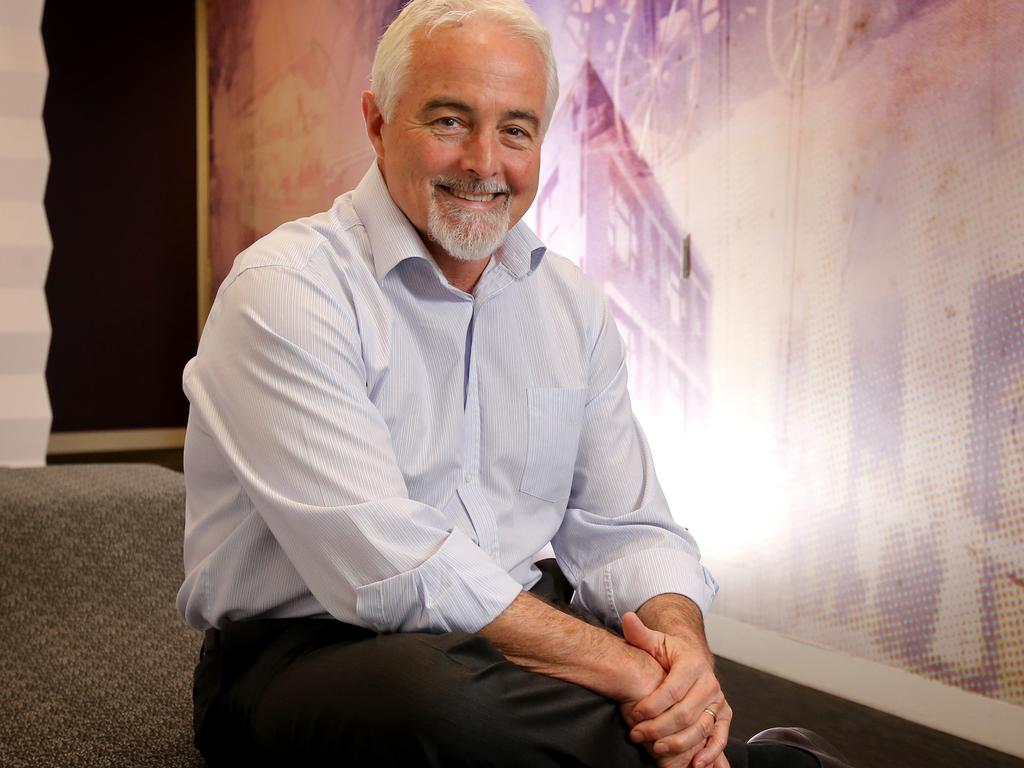Low debt saved us from pandemic downturn, says ANZ
Australia Inc is in sound financial shape, applying the lessons from the GFC by deleveraging ahead of the pandemic, says ANZ.

Australia Inc is in sound financial shape, applying the lessons it learnt in the financial crisis by deleveraging ahead of the coronavirus pandemic, according to the head of the nation’s leading institutional bank.
ANZ institutional boss Mark Whelan said many COVID-19 casualties would be in the mid-market segment.
Companies that struggled in the lead-up to the pandemic would also continue to find it tough.
“But the customers I’m dealing with — the publicly listed groups, large family businesses and corporates — went into the COVID period in pretty strong shape,” Mr Whelan told The Australian.
“The reason is that many of our global customers experienced difficulty getting loans in the financial crisis, and capital markets had also shut down, so over the last seven to eight years they’ve paid down a lot of debt, particularly in Australia.
“That’s been really important for the country and obviously for them.”
Mr Whelan, who has been in the bank’s institutional hot seat since early 2016, was speaking from ANZ’s near-vacant trading floor in Melbourne, where 56 deal-hungry operators used to spend their working days. They now ply their trade from home.
Their boss, meanwhile, has relocated from the 10th floor, where an office consolidation is under way. Mr Whelan, a one-time markets operator, said the shift had put him closer to rapidly unfolding global events, with the markets business the likely transmission mechanism for any early impact on the division’s profitability.
He and CEO Shayne Elliott are the only two members of the ANZ executive leadership team who are working from the office rather than home. Despite working on separate floors, and the building’s cavernous empty spaces, they occasionally run into each other. Mr Whelan said that as the virus spread and the likelihood of an economic shutdown increased, his large corporate customers quickly implemented measures to cushion the blow.
“The first thing they did was to undertake stress-testing of their own businesses to determine their working capital and liquidity needs on the basis of a six or nine-month shutdown,” he said.
“Their balance sheets were strong coming into it, but when revenue drops to the degree that it did they quickly came to the conclusion that they needed additional facilities.”
The second measure was to take immediate action on costs, concentrating on staff, marketing and advertising, rent relief and capital expenditure to reduce the cash burn.
Finally, to ensure they had sufficient liquidity to ride out the crisis, they asked for new facilities even though there was a lot of headroom in their existing arrangements, which were drawn down to an average of 35 per cent.
ANZ set up a credit war room in March as a result of the surge in lending requests.
It stress-tested the 20 industry sectors in its portfolio, undertook thorough due diligence on each loan application, and organised weekly virtual updates for customers on the economic impact of the pandemic. At one of the early meetings, the bank was asked by one customer how it would treat covenant breaches.
The official policy was that traditional measures like debt/EBITDA had little value in the current environment, and ANZ would instead rely on stress testing until conditions sufficiently improved.
But the ramifications for the bank were clear.
In an industry where capital was everything, particularly in a crisis when regulators were hyper-vigilant, the last thing the market wanted to see from any bank was a spike in capital-heavy lending activity.
Against that, ANZ could not afford to spurn the reasonable requests of its hand-picked institutional customers, with Mr Whelan having already culled the list from 27,000 in 2015 to 7000.
“We wanted to reduce the risk intensity and capital intensity in the business, and that’s why we reduced the number of customers,” he said.
“To get our product mix right we invested in payments and markets and we’ll continue that strategy, but we also felt it was the right time to lend to our existing customers and we’ll continue to do that.”
Predictably, the market got spooked when ANZ unveiled its interim result on April 30.
Risk-weighted assets were shown to have surged by $26bn to $207bn.
After currency effects and other adjustments, the increase in actual lending volume was only $10bn, of which $3bn occurred in the first five months of the half-year.
On the upside, margins were elevated because the lending was priced for heightened risk.
However, unlike the prolonged 12 to 18-month period of inflated margins in the financial crisis, they retreated after central banks co-ordinated a rapid injection of liquidity into the financial system.
ANZ was left to explain why it had dished out $7bn in March — an amount normally spread out over 12 months. The reaction of respected UBS bank analyst Jon Mott was typical.
“The significant increase in ANZ’s institutional loan growth and subsequent rise in risk-weighted assets were key surprises of the result,” Mr Mott said.
“We believe the extent of institutional lending growth will depend on the extent of the downturn and shape of the recovery. This is important as the level of institutional lending is a key driver of how much capital is required in the future.”
Mr Whelan commented that divisional lending growth had “moderated and was broadly flat in April”, and expectations were for “significantly less growth in the second half”.
ANZ will continue the search for the elusive balance for its institutional business that pleases the market.
The critics who say the business’s return on equity will never match what’s on offer in ANZ’s mature domestic market will probably never be convinced.
Mr Whelan, however, said the institutional division had to be seen as a “counterbalance” to the retail operation.
“Getting the right mix is the appropriate position, and business, and Shayne and I talk about this constantly,” he said.
“It’s a very good business, and returns are above cost of capital, which is where you want to be.
“We’re seeing more volume through our cash businesses than we’ve ever seen.”







To join the conversation, please log in. Don't have an account? Register
Join the conversation, you are commenting as Logout